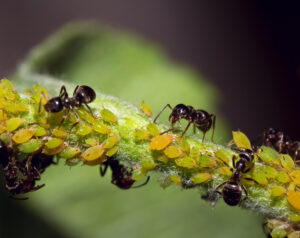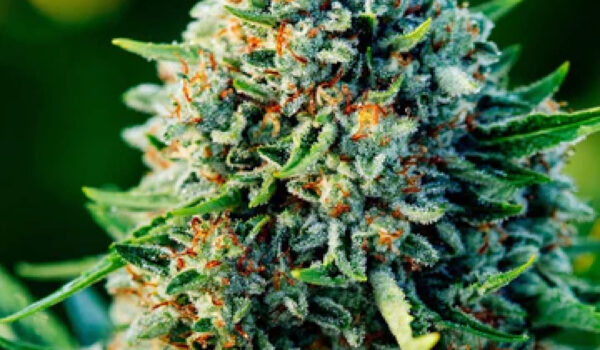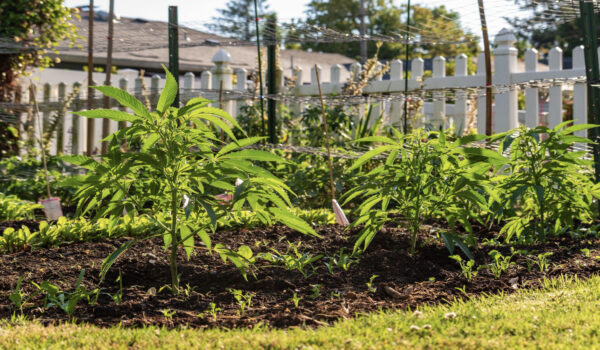by Rincon-Vitova Insectary
Ants

There are more than 12,400 species of ants throughout the world. In California, there are about 270 species, but fewer than a dozen are important pests. Ants interfere with biological control. Honeydew-secreting pests, like aphids, supply sweet food to the ants. In turn, ants protect the pests from beneficial insects that try to eat them. Controlling ants is important when attempting to control these honeydew producing pests. Baiting is a low risk approach that interrupts ants’ interference. Once they have found an adequate food source, they create a pheromone trail, a chemically marked highway, to and from the ant nest. More bait stations are not necessarily the answer, but strategic placement is important.
Identification
Ants are close relatives of bees and wasps.
Common wingless adult forms, known as workers.
Winged forms, which leave the nest in large numbers in warm weather to mate and establish new colonies, are often mistaken for winged termites.
Life Cycle
A newly mated queen typically establishes a new colony.
After weeks or months of confinement underground, she lays her first eggs.
When the eggs hatch, she feeds the white, legless larvae with her own metabolized wing muscles and fat bodies.
Several weeks after the larvae pupate; sterile female adult workers emerge and dig out of the nest to collect food.
The queen continues to lay eggs. As colony numbers increase workers add new chambers and galleries to the nest.
After a few years, the colony begins to produce winged male and female ants, which leave to mate and form new colonies.
*Argentine ants differ – nests are shallow, extending just below the soil surface (dry conditions will nest deeper)
Colonies aren’t separate but linked to form one large “super colony” with multiple queens.
Newly mated queens dispersing to found new colonies are accompanied by workers
Monitoring
Regularly inspecting is an important part of an IPM program.
Check near attractive food sources or moist areas and along pipes and electrical wires.
Look for large trails of ants or for just a few stragglers. Stragglers are scouts randomly searching for food/ nesting sites. Try to follow trails to where ants are entering the building, and also to the nest if possible.
Look indoors and outdoors for holes or cracks in foundations and walls that provide entry points to buildings.
Cultural Practices
It is unrealistic and impractical to attempt to totally eliminate ants from an outdoor area.
Focus efforts on excluding ants from buildings or valuable plants and eliminating their food and water sources.
In pots: Submerge pots (20+ minutes) in a solution of insecticidal soap and water: 1-2 tablespoons soap per quart of water.
Submerge so the surface of the soil is just covered by the water-soap solution.
Ants can be kept out of plants by banding trunks with pest glue such as Tanglefoot.
Trim branches to keep them from touching structures or other plants so ants are forced to climb up the sticky trunk.
Protect trunks by wrapping with heavy paper, duct tape, or fabric tree wrap and coating this with the sticky material.
Check coating every 1-2 weeks for debris and dead ants, which will allow subsequent ants to cross.
Mechanical Disruption and Exclusion: destroy ant mounds as much as possible with a shovel or pick.
Auntie Fuego soil conditioner (orange oil, humic acid, molasses) also deters ants.
Granular Ant Bait
Dry granular ant baits are a discrete way of treating public access areas and may be used with liquid systems
In low rainfall areas, be mindful of buildup of boron in the soil to avoid burning plants.
Boric Acid Ant Bait Systems
Boric Acid (borate or various forms of sodium borate) is a salt that is a low risk insecticide. It is considered non-toxic.
Boris acid is less toxic to humans than table salt.
In trace amounts, the boron in boric acid is a plant nutrient; high concentrations will cause a little salt burn in plants.
Foraging ants take low concentration bait solution back to colony in repeated trips.
The colony will weaken and possibly die. This may take 1 – 2 months.
Higher concentrations of boric acid kill the ants before they can take the food back to the colony.
The 0.5 – 1% concentration is more effective long term at reducing the colony.
DIY: Use any container with 1/8 inch holes so ants can get in but bees and butterflies can’t. Put in twigs, or plastic “bridge” material so ants can access bait without drowning.
Recipe: 1C Sugar / 2C Water / 2 teaspoons boric acid [1% boric acid in 25% syrup (by weight) developed by UC]
Not interested in sweet bait? Try cups with a small amount of corn meal wet with vegetable oil, or peanut butter.
For oily baits, try 10% boric acid by weight (or less if ants reject the bait/dead individuals are seen near bait).
If ants are more attracted to any of these foods, change the bait in the bait stations to more attractive matieral.
Placing of Liquid Dispensers
For initial baiting try 2 – 8 liquid bait stations around a home or 4 – 16 per acre in a production setting.
Structural baiting
-Always bait outside of residences
-At least one station on each side of structure, (depending on size and number of different structure walls).
-Key areas: by common corner where insects converge from more than one direction
-Place by the A/C condenser water overflow outlet.
-Water is always a primary attractant.
-North-side: high shade & moist areas.
-Do not put stations directly over nests
-Do not use insecticides near nests
Lawn, garden & rest of property:
-For full property protection, place additional ant bait stations spaced around perimeter of lot.
-Avoid locations where substantial water run-off will occur.
-Placement Guideline around property:
– Up to two acre lot size, use a min. of 4 units
– Greater than two acres, use 2 units for each added acre
– Adjust as needed based on activity.
Agricultural Acreage:
-General: use 14 per acre or about 50 to 60 foot apart in a matrix.
-Number of ant bait stations per acre depends on the targeted species (Argentine Ant, White-footed Ant, etc.); the degree of infestation; and the acreage involved and whether it is contiguous acreage.
-If trying to manage Argentine ants, move stations to perimeter after no more activity is observed in interior of the block or property.
-Argentine ants may forage as far as 75 to 200 feet.
Check bait stations every few days for the first week of baiting. Refill bait stations as needed.
If no bait is taken from bait station and no ants are seen around it, move the station to another location.
Certified organic farms: bait cannot contact the soil. Use secure bait stations or place station on a tray to contain spills.
Tips to Improve bait effectiveness
Remove any particles of food, residues of sweet liquids, or other attractive material from ant-infested areas.
Treatments in late winter and early spring when ant populations are just beginning to grow will be most effective.
Ant preferences can change throughout the year; set out different formulations of various bait, giving ants a choice.
Baits can dry up or become rancid and unattractive over time.
If dead ants are seen inside bait stations, wash with plain water, refill and replace.
Avoid using pesticides: Phenylpyrazoles (fipronil), Avermectin B (abamectin). hydramethylnon,
Pyrethroids: (bifenthrin, cyfluthrin, fluvalinate, and permethrin) actually contact insecticides that rapidly kill foragers and don’t control the colony. Carbamates (propoxur) or Oxadiazines (indoxacarb) aren’t very effective, because the active ingredient is too fast-acting. These materials are highly toxic to natural enemies and pollinators.
Safer contact insecticide hard surfaces: Mix 4- 6 ounces orange oil per gallon with 2- 4 ounces liquid detergent or soap. Treat for ants around trees: Saturate soil around trunk, and look for where ants are coming from.
Orange Guard is a ready-to-use orange oil spray.


